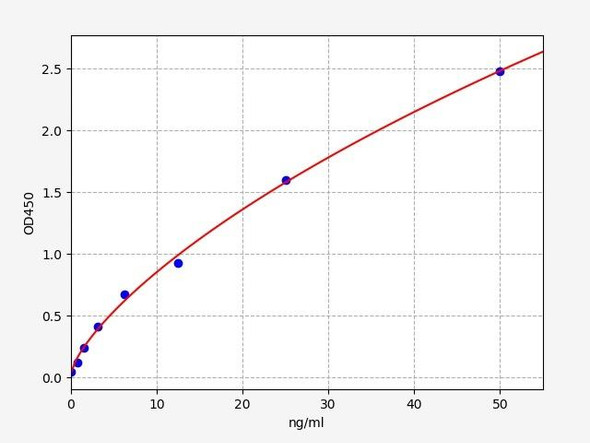| UniProt Protein Function: | IP3R2: a multi-pass endoplasmic reticulum membrane receptor for inositol 1,4,5-trisphosphate, a second messenger that mediates the release of intracellular calcium. This release is regulated by cAMP both dependently and independently of PKA. Most normal tissues displayed weak to moderate cytoplasmic positivity. Strong staining was observed in the gastrointestinal tract, hepatocytes and exocrine pancreas. Short isoform Is found in skeletal muscle and heart. The receptor contains a calcium channel in its C-terminal extremity. Its large N-terminal cytoplasmic region has the ligand-binding site in the N-terminus and modulatory sites in the middle portion immediately upstream of the channel region. Phosphorylation by PKA increases calcium release. Calcium appears to inhibit ligand binding to the receptor, most probably by interacting with a distinct calcium-binding protein which then inhibits the receptor. Belongs to the InsP3 receptor family. 2 isoforms of the human protein are produced by alternative splicing. The short isoform is found in skeletal muscle and heart.Protein type: Membrane protein, integral; Channel, ligand-gated; Membrane protein, multi-pass; Channel, calciumChromosomal Location of Human Ortholog: 12p11Cellular Component: endoplasmic reticulum membrane; sarcoplasmic reticulum membrane; membrane; integral to membrane; plasma membrane; cell cortex; receptor complexMolecular Function: calcium ion transmembrane transporter activity; phosphoinositide binding; inositol 1,4,5-triphosphate-sensitive calcium-release channel activityBiological Process: epidermal growth factor receptor signaling pathway; platelet activation; inositol phosphate-mediated signaling; fibroblast growth factor receptor signaling pathway; nerve growth factor receptor signaling pathway; signal transduction; phospholipase C activation; transport; energy reserve metabolic process; response to hypoxia; innate immune response; blood coagulation; vascular endothelial growth factor receptor signaling pathway; regulation of insulin secretionDisease: Anhidrosis, Isolated, With Normal Sweat Glands |
| UniProt Protein Details: | |
| NCBI Summary: | The protein encoded by this gene belongs to the inositol 1,4,5-triphosphate receptor family, whose members are second messenger intracellular calcium release channels. These proteins mediate a rise in cytoplasmic calcium in response to receptor activated production of inositol triphosphate. Inositol triphosphate receptor-mediated signaling is involved in many processes including cell migration, cell division, smooth muscle contraction, and neuronal signaling. This protein is a type 2 receptor that consists of a cytoplasmic amino-terminus that binds inositol triphosphate, six membrane-spanning helices that contribute to the ion pore, and a short cytoplasmic carboxy-terminus. A mutation in this gene has been associated with anhidrosis, suggesting that intracellular calcium release mediated by this protein is required for eccrine sweat production. [provided by RefSeq, Apr 2015] |
| UniProt Code: | Q14571 |
| NCBI GenInfo Identifier: | 95147335 |
| NCBI Gene ID: | 3709 |
| NCBI Accession: | NP_002214 |
| UniProt Secondary Accession: | Q14571,O94773 |
| UniProt Related Accession: | Q14571 |
| Molecular Weight: | 20,608 Da |
| NCBI Full Name: | inositol 1,4,5-trisphosphate receptor type 2 |
| NCBI Synonym Full Names: | inositol 1,4,5-trisphosphate receptor, type 2 |
| NCBI Official Symbol: | ITPR2 |
| NCBI Official Synonym Symbols: | IP3R2; CFAP48 |
| NCBI Protein Information: | inositol 1,4,5-trisphosphate receptor type 2; IP3 receptor; IP3R 2; cilia and flagella associated protein 48; inositol 1,4,5-triphosphate receptor, type 2; insP3R2; type 2 InsP3 receptor; type 2 inositol 1,4,5-trisphosphate receptor |
| UniProt Protein Name: | Inositol 1,4,5-trisphosphate receptor type 2 |
| UniProt Synonym Protein Names: | IP3 receptor isoform 2; IP3R 2; InsP3R2; Type 2 inositol 1,4,5-trisphosphate receptor; Type 2 InsP3 receptor |
| Protein Family: | Inositol 1,4,5-trisphosphate receptor |
| UniProt Gene Name: | ITPR2 |
| UniProt Entry Name: | ITPR2_HUMAN |






